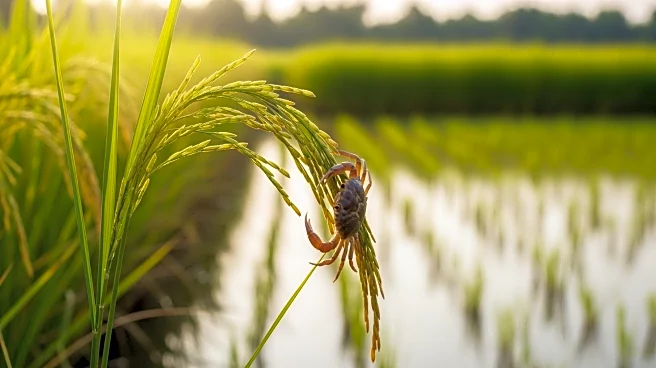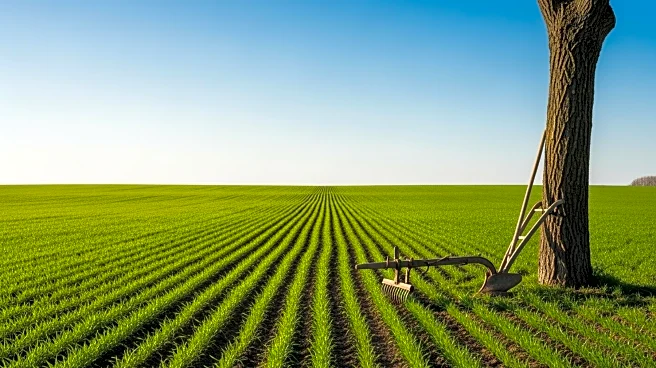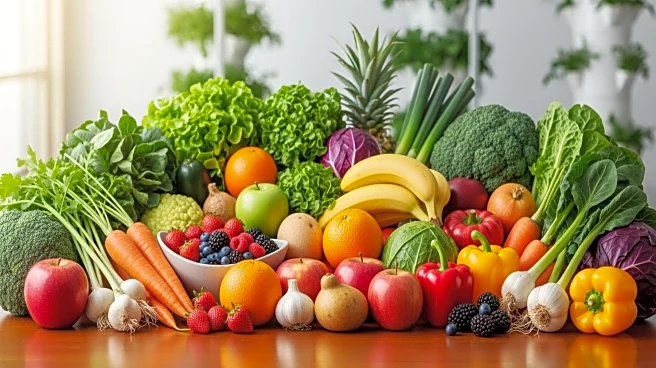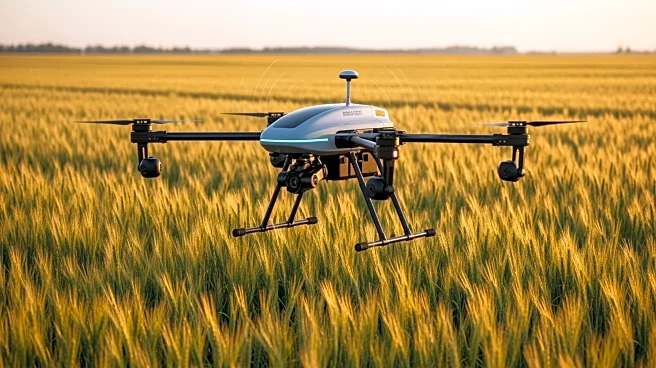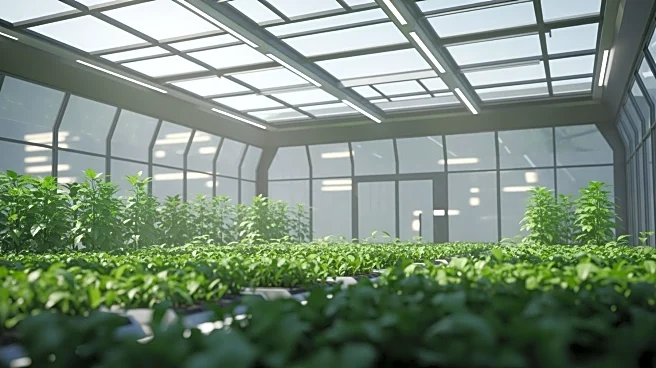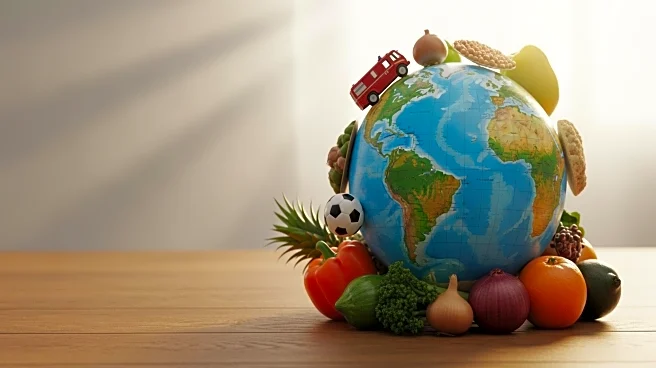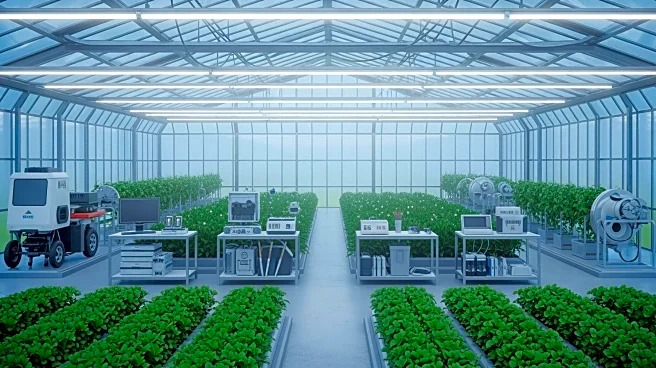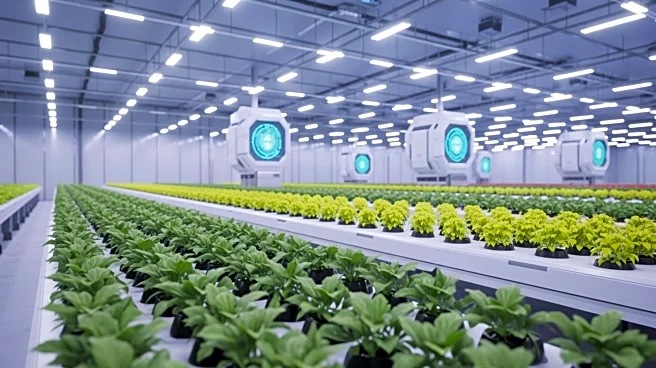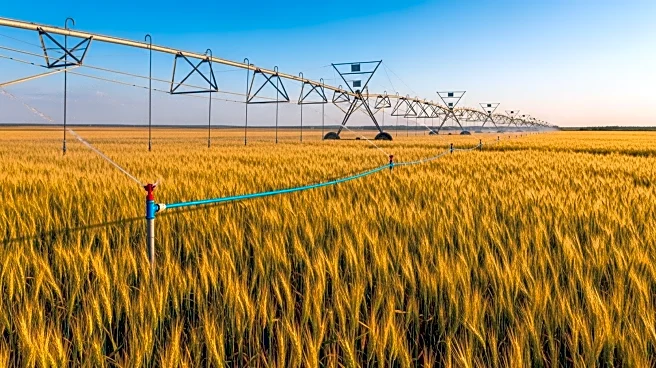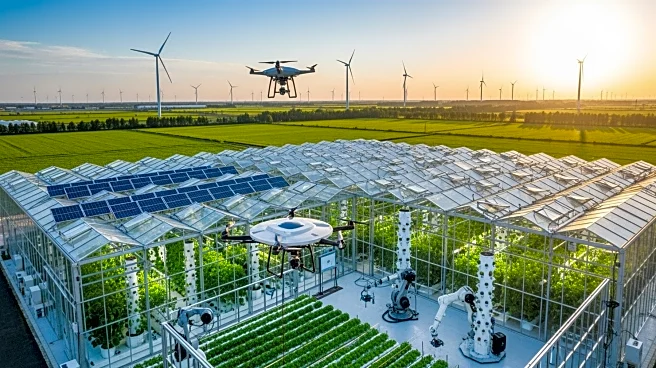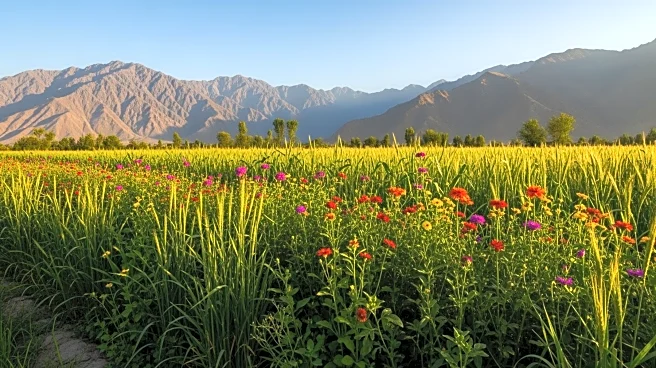What's Happening?
Farmers in Tangyuan County, Heilongjiang Province, are successfully implementing a co-cultivation model of rice and crabs, enhancing agricultural productivity and income. This innovative approach involves
using crabs to naturally fertilize rice paddies, reduce pests, and improve soil quality, while rice paddies provide crabs with a suitable habitat. The model has been widely adopted across the county, with farmers reporting increased yields and profits. The dual harvest system not only boosts local economies but also attracts tourists, with plans for agritourism ventures underway.
Why It's Important?
The rice-crab co-cultivation model represents a significant advancement in sustainable agriculture, offering economic and ecological benefits. By reducing the need for chemical fertilizers and pesticides, this approach promotes environmental health and supports biodiversity. It provides farmers with a diversified income stream, enhancing rural livelihoods and economic resilience. The model serves as a potential blueprint for modern agriculture, demonstrating how traditional practices can be adapted to meet contemporary challenges. The success in Heilongjiang could inspire similar initiatives in other regions, contributing to global food security and sustainable development.
Beyond the Headlines
The integration of agriculture and tourism through the rice-crab model highlights the potential for rural development and cultural exchange. Agritourism can foster community engagement, preserve local traditions, and promote environmental awareness. The model also raises questions about the scalability and adaptability of such practices in different ecological and economic contexts. As climate change continues to impact agriculture, innovative solutions like this may become increasingly vital for ensuring food security and sustainable rural economies.
